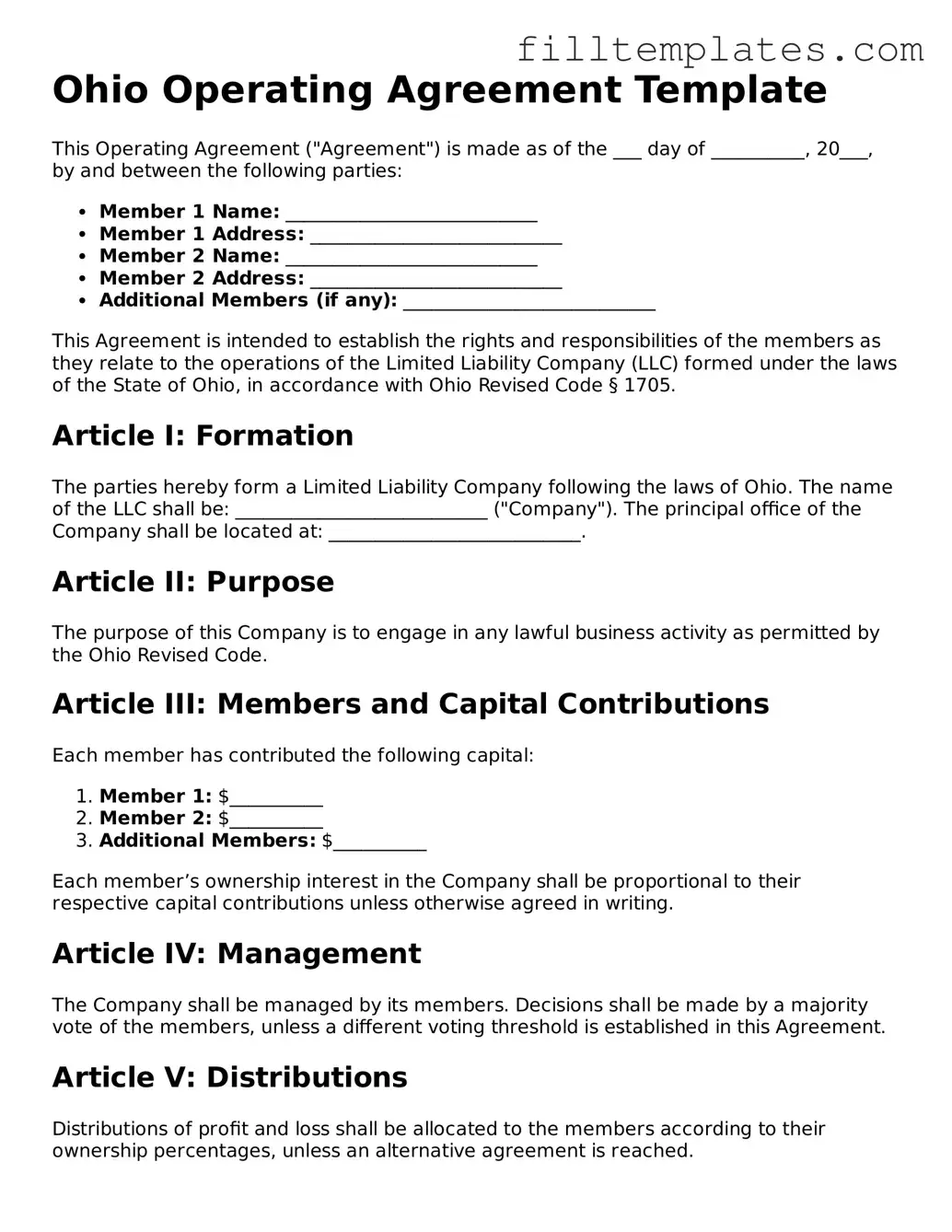Ohio Operating Agreement Template
This Operating Agreement ("Agreement") is made as of the ___ day of __________, 20___, by and between the following parties:
- Member 1 Name: ___________________________
- Member 1 Address: ___________________________
- Member 2 Name: ___________________________
- Member 2 Address: ___________________________
- Additional Members (if any): ___________________________
This Agreement is intended to establish the rights and responsibilities of the members as they relate to the operations of the Limited Liability Company (LLC) formed under the laws of the State of Ohio, in accordance with Ohio Revised Code § 1705.
Article I: Formation
The parties hereby form a Limited Liability Company following the laws of Ohio. The name of the LLC shall be: ___________________________ ("Company"). The principal office of the Company shall be located at: ___________________________.
Article II: Purpose
The purpose of this Company is to engage in any lawful business activity as permitted by the Ohio Revised Code.
Article III: Members and Capital Contributions
Each member has contributed the following capital:
- Member 1: $__________
- Member 2: $__________
- Additional Members: $__________
Each member’s ownership interest in the Company shall be proportional to their respective capital contributions unless otherwise agreed in writing.
Article IV: Management
The Company shall be managed by its members. Decisions shall be made by a majority vote of the members, unless a different voting threshold is established in this Agreement.
Article V: Distributions
Distributions of profit and loss shall be allocated to the members according to their ownership percentages, unless an alternative agreement is reached.
Article VI: Indemnification
The members shall indemnify and hold harmless each other against any and all claims made against the Company arising from negligence or misconduct, to the fullest extent permitted by law.
Article VII: Amendments
This Operating Agreement may be amended or modified only through a written agreement signed by all members.
Article VIII: Governing Law
This Agreement shall be governed by and construed in accordance with the laws of the State of Ohio.
Signatures
By signing below, each party acknowledges and agrees to be bound by the terms of this Operating Agreement:
- Member 1 Signature: ___________________________ Date: ____________
- Member 2 Signature: ___________________________ Date: ____________
- Additional Member Signatures: ___________________________ Date: ____________
Each member should carefully review this Agreement and consider consulting legal counsel before signing.
